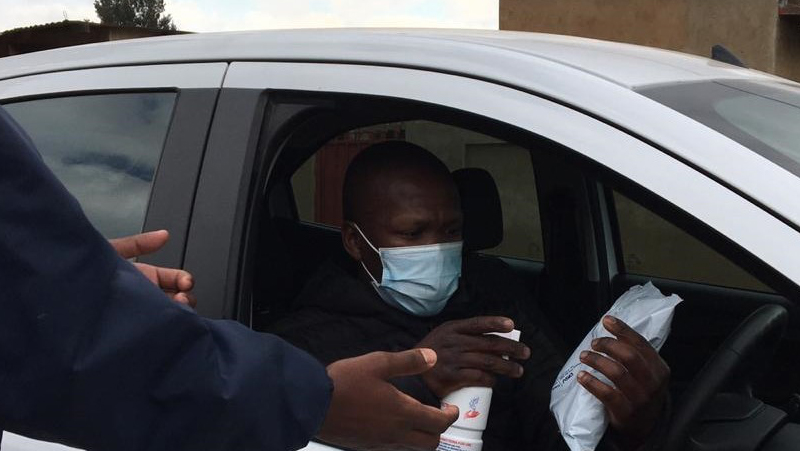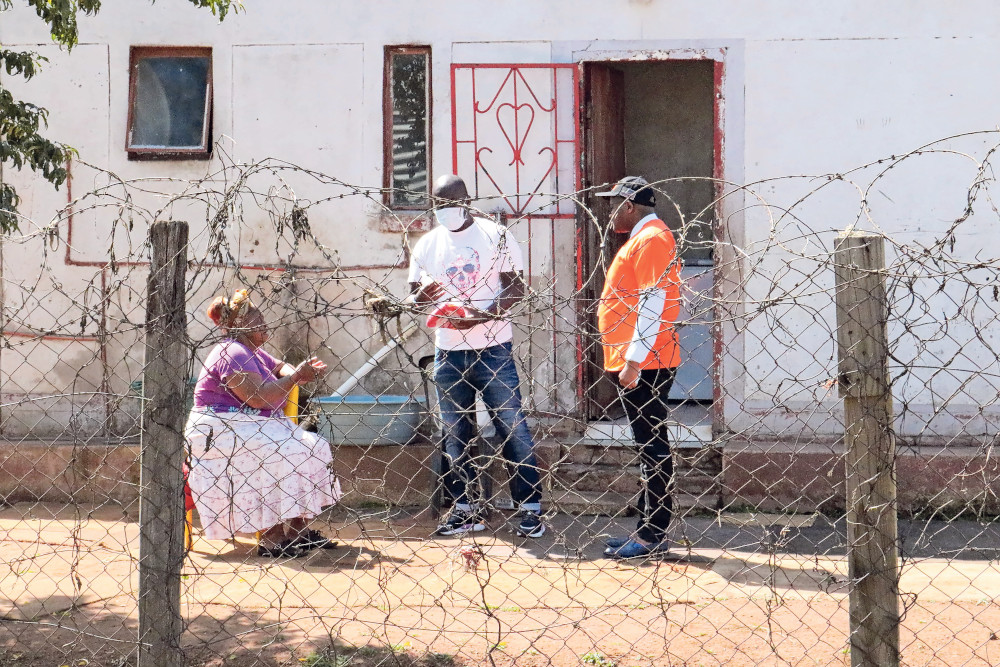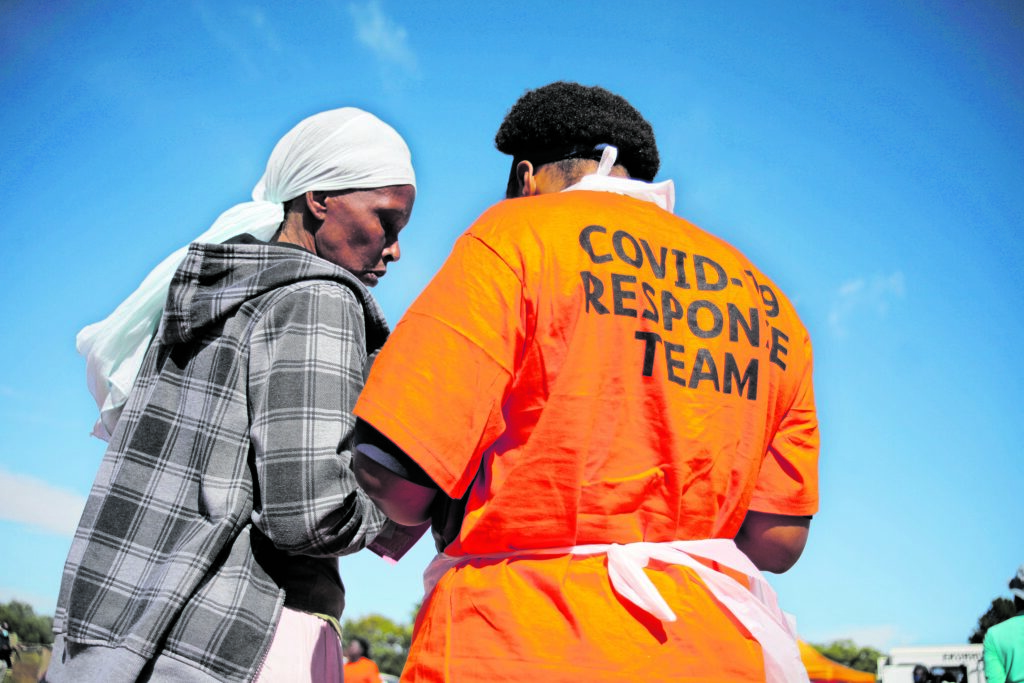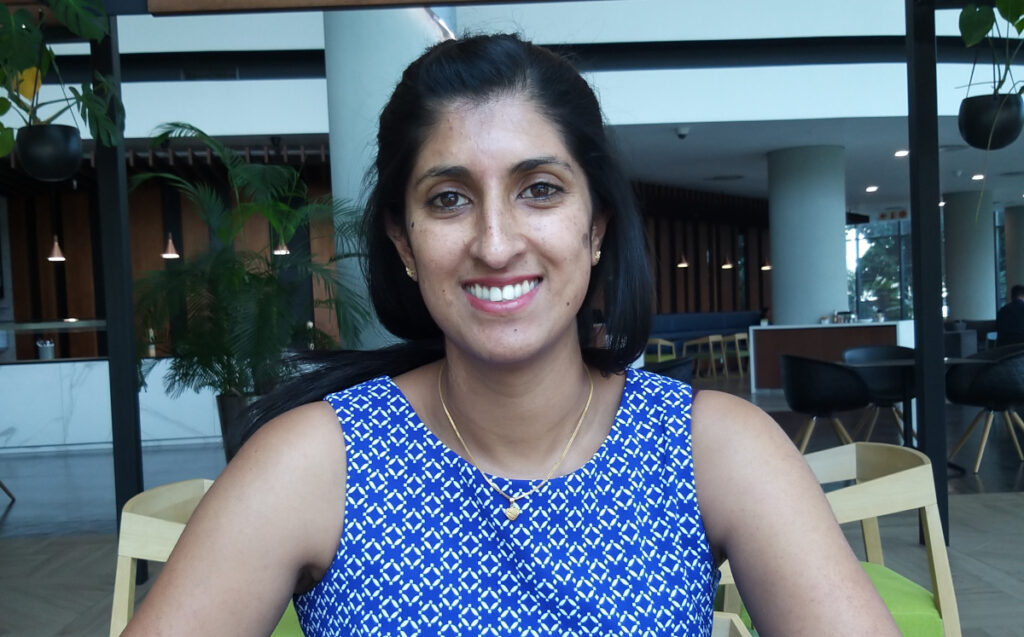Deputy President David Mabuza.
Endless funerals and the digging of graves. Mothers watching their children die and coming to terms with raising their grandchildren — who themselves were likely to be HIV-positive. Children raising their siblings. A whole generation wiped out. These are some of the lasting memories of the HIV epidemic in South Africa, and two decades later, the ramifications are still far-reaching: the country and its people have been forever changed.
The height of the HIV struggle in South Africa is etched into the memories of all its citizens. As activists — many who were living with HIV — and allies took to the streets to fight for the rollout of antiretroviral (ARV) treatment in the country during a time where the government was plagued Aids denialists, the stigma and discrimination that people living with HIV faced was rife.
There are now 7.9 million people infected with HIV in 2017, according to the Human Sciences Research Council’s (HSRC) latest HIV household survey. That’s about 14% of the population, and almost three out of four of people who know they’re infected are taking ARVs. People taking their ARV treatment substantially contributes to the fight against HIV, because the more people consistently take their HIV medication, the likelier they are to be virally suppressed — to have very low amounts of HIV in the blood, making it undetectable through common HIV tests.
Research has shown that people living with HIV who are virally suppressed cannot transmit the virus to other people. This is why South Africa has committed to the United Nation’s 90-90-90 target — goals to ensure that by 2020, 90% of all people living with HIV will know their HIV status and of those who know their status, 90% must be on treatment, and 90% of all people on treatment should be virally suppressed.
According to a recently published study in BMC Public Health, 85% people aged 15 years and older who are HIV positive knew their status, 71% were currently on ARV treatment and 87% of those on treatment were estimated to be virally suppressed at the time the 2017 HSRC HIV survey was conducted.
In his address at the official World Aids Day commemoration in Soweto, Deputy President David Mabuza highlighted South Africa’s efforts to reach the 90-90-90 targets. “As a country, we have made great strides in meeting the first target of ensuring that people know their HIV status. At present, 92% of people living with HIV know their status. Of course, there are provinces that are doing better than others, but in general, South Africans are testing, and this behaviour needs to be encouraged and maintained.”
The country needs to remain focused and initiate more people on treatment, and make sure that they stay on treatment and are virally suppressed, Mabuza added.
“Together we can do this. Together as a country we can reach the remaining two 90-90 targets, and ensure that HIV and [tuberculosis] are turned from perceived death sentences into a manageable and treatable diseases.”
KwaZulu-Natal shows how it’s done
Additionally, findings from the leading mathematical model of HIV in South Africa, called the Thembisa model, shows that most provinces are making progress in achieving the 90-90-90 targets, with KwaZulu-Natal leading the pack — which is an outstanding achievement considering that the province is home to almost a third of the country’s population living with HIV.
It’s not the first time KwaZulu-Natal has led in the race to meet all the goals. Just last year, Eshowe — a small town in the northern part of the province — reached the UN targets a year before the deadline. Research from international medical humanitarian organisation Doctors Without Borders (MSF) found that 90% of participants in Eshowe living with HIV knew their status, 94% were taking treatment and 95% of those on treatment have a suppressed viral load. In its study, MSF conducted interviews and tested 3 200 people between the ages of 15 to 59 in the area. They also measured the viral loads of those who tested HIV-positive — whether or not they were on treatment. The results of the study showed an overall increase in people’s awareness of their HIV status and those on treatment.
“We’ve shown that it’s possible to reach 90-90-90 in an area with one of the highest HIV infection rates in the country, where one in four people is living with HIV. These results are a testament to the full engagement of the entire community,” MSF’s Liesbet Ohler said at the time the results were released.
Pandemic disrupts HIV testing
But the Covid-19 pandemic has disrupted health services across South Africa; most worryingly, HIV services have also been negatively impacted, and getting back on track may be a challenge. According to figures from the national health department, HIV testing at public hospitals and clinics decreased by more than half during the first month of lockdown when movement was considerably restricted with the aim of reducing infections and “flattening the curve”.
Although HIV testing services were operational throughout lockdown, people did not go to health facilities for testing. About 1.6-million HIV tests were conducted in March. In April that number dipped to just fewer than 690 000 tests, just after the lockdown was instituted at the end of the previous month. Additionally, more than twice as many people tested for HIV in April last year compared to this year, showing one of the devastating effects the Covid-19 pandemic has had on access to healthcare services.
The pandemic also forced the public and private health sector to divert resources for other health needs to contain the spread of Covid-19, including a decrease in the number of diagnostic tests for TB, treatment and contact tracing as well as starting TB patients on prevention treatment. South African health experts also cautioned that people infected with TB may be more at risk of Covid-19 infections and this could also worsen their outcomes.
“Each one of us needs to play their role in reducing new HIV and TB infections, in stopping gender-based violence and femicide, and in protecting the most vulnerable in our society, including adolescent girls and young women,” Mabuza said. “This is important, since HIV and Covid-19 become exacerbated by inequality in lack of access to health infrastructure and social safety nets. For us as government, guaranteeing human rights and public health are mutually inclusive.”
Despite the setbacks, Mabuza added, the government is still committed to achieving the 90-90-90 targets and be back on track to end HIV by 2030 by “doing the basics right”, including dispensing more than one month’s worth of HIV treatment at primary healthcare facilities as well as seamlessly co-ordinating the HIV and TB response and winning over communities.
While there are still challenges, South Africa has come a long way since the late 90s and early 2000s and has made huge strides towards managing HIV. — Pontsho Pilane
Aurum delivers innovative HIV care during pandemic
 Aurum delivers life-saving medication to homes: Aurum driver Nicolas Moremi drops off a chronic medication package to a patient in the Tembisa area. He can make up to 20 deliveries a day, saving hundreds of people time, money and effort every month.
Aurum delivers life-saving medication to homes: Aurum driver Nicolas Moremi drops off a chronic medication package to a patient in the Tembisa area. He can make up to 20 deliveries a day, saving hundreds of people time, money and effort every month.
The Aurum Institute is one of a few organisations delivering chronic medication, including antiretroviral treatment (ART), to people at their homes.
This is to limit the number of people at healthcare facilities as part of measures to prevent the transmission of Covid-19. Teams from Aurum’s POPINN project are also doing home deliveries of Pre-Exposure Prophylaxis (PrEP) and ART to key populations — men who have sex with men (MSM) and transgender women (TGW) — in five districts across the country.
Innovative approach to public health
Aurum’s Head of Pharmacies Niel van Rooyen said the idea for home deliveries was prompted by the need to provide an innovative approach to public health during this time. Before the Covid-19 pandemic, Aurum was already pioneering solutions for the convenient collection of medication such as the chronic medication locker system, the Pelebox created by Technovera. These support the Department of Health’s Medicines Dispensing and Distribution (CCMDD) programme. “For home deliveries, we target clinics with a high number of patients and we’re delivering all CCMDD treatment.”
 Through Aurum’s home delivery project, hundreds of people are receiving life-saving chronic medication while staying home and safe during the Covid-19 lockdown.
Through Aurum’s home delivery project, hundreds of people are receiving life-saving chronic medication while staying home and safe during the Covid-19 lockdown.
Drivers are currently delivering from 10 health facilities in Ekurhuleni, where Aurum supports the government with TB and HIV treatment programmes funded by the U.S. President’s Emergency Plan for AIDS Relief (PEPFAR), through the Centers for Disease Control and Prevention (CDC),” said Van Rooyen.
One of the Aurum drivers who makes these deliveries is Mncendisi Mpulo, who is based at the Dukathole Clinic in Germiston. He works with tracer Phindile Sityodana, who contacts the recipients to make an appointment. “She sends the list of the day’s deliveries to my tablet and I use that information to plan my route for the day. It’s very important to plan ahead so I can be efficient and make more deliveries,” said Mpulo. He alerts the recipients when he leaves the clinic and phones again when he is outside their home or alternative meeting point, as some people fear stigma.
“I check their ID and clinic card to make sure I’m handing the medication to the right person. I sanitise my hands and the package before handing it to them and then again after. People are very happy that they don’t have to come to the clinic. Home delivery saves them time and money they would have spent on transport or lost having to take the day off work to queue for their medication, as many work in the informal sector,” added Mpulo.
 Covid-19 infection prevention measures are taken when delivering medication to people in their homes.
Covid-19 infection prevention measures are taken when delivering medication to people in their homes.
The project is managed by Trevor Masevhege, a Community Management Mentor at Aurum. “Each person’s medication is pre-packed when it arrives at the pharmacy. Clinic and Aurum pharmacists and pharmacist assistants then allocate these packages to decanting teams,” he said. These teams identify alternative treatment pick-up points, such as the post office, to decongest clinics. Other medication is loaded into the Pelebox and now, some are bound for home delivery.
Promoting adherence while social distancing
More than 25 000 deliveries have been made since the start of the project in April. This is an effective way to keep people on medication to promote adherence while social distancing.
Adherence saves lives, which is what motivates driver Nicolas Moremi. He works with tracer Molatelo Manamela to deliver medication from the Tembisa Health Care Centre. He said the project gives him a sense of purpose. “Making sure people get their medication is a big responsibility and it makes me feel like I’m playing an important role in the healthcare system, especially at during this pandemic which has left so many people vulnerable in different ways. It makes me really proud to be part of a solution which is helping people to stay healthy.”
Aurum donation of Shesha Geza hand washing stations makes it safe to continue to seek care
 The innovative Shesha Geza, which creates access to hand washing for people who continue to seek care at health facilities.
The innovative Shesha Geza, which creates access to hand washing for people who continue to seek care at health facilities.
The Aurum Institute has donated 260 self-contained hand washing stations to healthcare facilities and schools to prevent the spread of Covid-19.
The self-contained stations, known as Shesha Geza, have the capacity for thousands of people to clean their hands. Hand washing remains one of the most effective Covid-19 infection prevention methods, and making soap and water or sanitiser readily available has become life-saving.
“This was an important contribution for us, because healthcare facilities are high foot traffic areas and they cannot stop operating. We have placed Shesha Geza stations in facilities we support in Ekurhuleni and in three districts in the North West,” said Dr Ntombifikile Mtshali, Managing Director: Health Systems Division.
The Shesha Geza was created in partnership with Aurum subsidiary, Aurum Innova- specialists in innovative healthcare and Vue Architects.
“We are faced with a new norm of having to wash or sanitise our hands more frequently than in the past, so we need to make it easier and accessible for people. This mobile station does just that. Understanding the challenges of access to clean water, and soap or sanitiser for some people in our country, this solution goes a long way ensuring infection control in high volume areas,” said Bandile Mathandela, Chief Operations Officer of Aurum Innova.
The design of the Shesha Geza makes it sustainable, cost-effective and impactful from an infection, prevention and environmental perceptive. It has three tanks built into it, which can hold between 300 and 500 litres. The tanks are filled with a solution of soap and water or an approved chlorine-based sanitising liquid.
“The Shesha-Geza is designed so that anyone using it does not have to touch anything, which of course is also to promote infection control. You use your foot to pump a peddle, which dispenses soap and water or the sanitising mixture,” said Mathandela. The two basins on either side of the station are separated by a wall of cylinders. “On top of being a cool design feature, these are functional: they hold the wastewater. So, together with the tanks for clean water, the Shesha-Geza is completely self-contained. We only need to refill it after 20 000 washes,” added Mathandela.
This makes the Shesha-Geza ideal for placement at healthcare facilities and schools, a donation which was made possible by PEPFAR through the CDC South Africa.
About The Aurum Institute
Established in 1998, the Aurum Institute is an African Health Impact Organisation with the mission to improve the health of people and communities living in poverty through innovation in global health research, systems and delivery. It is rooted in Africa and is dedicated to researching, supporting and implementing innovative, integrated approaches to Global Health. Its headquarters are in South Africa with offices in the US, Ghana, Lesotho and Mozambique. The Aurum Institute has developed itself into a leader in the field of TB and HIV, bridging the worlds of research, policy and implementation for impact.
Dr Sumy Thomas: Deciphering the human puzzle, from the inside out
 Dr Teressa Sumy Thomas
Dr Teressa Sumy Thomas
Dr Teressa Sumy Thomas says it was her early years in the rural Eastern Cape that shaped her broader goal in life: to serve those in need. “I grew up in the Transkei, where my parents taught senior secondary biology and physical science at rural schools. These were schools where the only meal the children received for the day was at school, and many came to school hungry. Education levels were low, and English was the medium of instruction, even though it was not their first language. Nevertheless, teachers and doctors emerged from those schools. So, quite early on, I was exposed to how difficult life can be for people starting out in South Africa, but how education can provide an equal opportunity,” she says.
As the 2020 recipient of the prestigious Discovery Foundation MGH Award, Thomas, 33, will have the opportunity of a year-long medical residency at Massachusetts General Hospital (MGH) in Boston, once travel restrictions are lifted. MGH is a clinical service and biomedical research facility and is the largest teaching hospital of Harvard Medical School, based in Boston in the United States.
She will receive face-to-face supervision from leading experts, and gain exposure to the hospital’s research environment.
Thomas, whose family was later based in Kokstad, KwaZulu-Natal, went on to study at a boarding school in Pietermaritzburg. “But, I think, being exposed to life in the Eastern Cape, where my parents taught for a decade, I saw the effects of HIV and I knew my broader aim was to serve the greater South African community,” the soft-spoken doctor says.
She decided to study medicine in high school. After completing her degree at the University of the Witwatersrand, Thomas did her practical training at the rural Ngwelezana Hospital near Pietermaritzburg, where she worked in emergency medicine. However, her recent specialisation, completed at Wits, was in internal medicine. “The reason for this specialisation is that I want to work closely with patients, to figure out the puzzle of medicine by using clinical clues. When we put these clues together, we can really help people with complicated conditions,” she says.
Looking for the answers to complicated conditions
Thomas says she will be placed at MGH Metabolism Unit in the Division of Endocrinology to figure out one such complicated condition that has come up in her recent work. She makes the science sound simple, explaining that her research will explore how HIV and antiretroviral medicine affect the endocrine system.
“This will strongly address a need in the population of South Africa. We have an estimated 7.7 million people living with HIV — the largest pandemic in the world. While ARVs have helped give longevity to patients in the past decade, we are now seeing larger number of patients at risk for cardiometabolic disease, including dysglycaemia and fatty liver disease, which could be a result of the virus itself or from ARV therapy. This area needs to be explored further,” she says.
“Diabetes is such an epidemic. Especially being of South Indian descent, I have seen the devastating effects on my family members who are predisposed to the condition. I also wanted to choose a topic that would be relevant to global health, in keeping with the aim of the award I’ve received. I am excited to have made contact with a mentor in the form of Professor Grinspoon, Chief of the Metabolism Unit, who has agreed to guide me during the fellowship,” she says.
The main aspect of her research is to study the reasons that ARV drugs and viruses promote glucose, cholesterol and hypertension abnormalities in patients. “It is a fairly new area of research, but I hope that it will allow us to work out how to target the right drugs for the right people,” she says.
“The metabolic unit at MGH undertakes ground-breaking studies aimed at improving the lives of people living with HIV, and I will have the incredible opportunity of being involved in novel trials conducted there,” Thomas adds.
Bringing it back home to SA
She says that as an endocrinologist, a much-needed speciality in the country, she will be able to support patients in the public sector.
“I can bring this knowledge back to South Africa to enhance the care of patients with new information acquired and to continue research in this field. By being attuned to the needs of our population, I hope to generate relevant research and be involved in the training of specialists in years to come,” says Thomas.
The Discovery Foundation MGH Fellowship Award was first introduced in 2013, and the specialist doctors are required to come back to South Africa to implement the knowledge they have gained.
It was her supervisor who encouraged her to apply for the fellowship. Professor Frederick Raal, Director of the Carbohydrate and Lipid Metabolism Research Unit at the University of the Witwatersrand, says he is delighted about her appointment and that the experience from the US will not only benefit Thomas, but it will also enhance the field of endocrinology and ultimately the health of the South African population.
“Sumy is an exceptional physician. She is hardworking, diligent and committed. The study will be of great benefit when she returns to South Africa, as we are at the epicentre of the HIV pandemic.”
Thomas adds that the fellowship opportunity is unparalleled in the medical field. “I realised that there was a knowledge gap, and it just so happened that Professor Steven Grinspoon, the Boston supervisor, was an organic fit.
“The clinical component of the fellowship gives me access to observing superspecialist clinics that I may not have been exposed to, but which will be most impactful in SA. I think it is amazing that this award is accessible to all doctors, especially young doctors. It can take you into world medicine and opens an opportunity for people who have a vision and want to bring it back to the country. Without it, we would have limited access to working in a world class research facility like MGH in Boston.
“And, as a lived experience, working abroad and seeing medicine in a different setting will be life-changing. My family is so excited and proud,” she says. “My sister is a surgeon in Chicago, and my parents, who are now retired, are happy to see their two young daughters contributing to science and working in academic medicine.
“The Discovery MGH Fellowship offers me an exciting opportunity for personal and academic growth, which I firmly believe I can use to benefit South Africans,” she says.
Dealing with HIV and TB co-infections in a time of Covid-19
With 2020 being the United Nations targeted year to reduce tuberculosis (TB) deaths among people living with HIV by 75% coming to an end, the Covid-19 global pandemic has raised grave concerns about its effects on the people co-infected with HIV and TB in South Africa and the world.
Global pharmaceutical company Sanofi South Africa, supported by the National Department of Health, commemorated World Aids Day through a webinar hosted by the Soul City Institute for Social Justice. The panel of experts — made up of the health department’s TB and HIV medical co-ordinator Dr Kgomotso Vilakazi-Nhlapo and Sanofi South Africa’s Dr Beki Magazi — discussed the lessons learnt and similarities in preventative measures from the emergence of the recently coined triple threat of HIV, TB and Covid-19.
According to the latest World Health Organization’s (WHO) World TB Report, an estimated 360 000 South Africans were infected with TB in 2019, and 58 000 died from the condition. From those recorded TB deaths, approximately 36 000 people living with HIV died in the same year. These significantly high numbers of infections and deaths highlight the links between the two conditions, known as co-infections when they present at the same time. Vilakazi-Nhlapho said it has been a long journey in combating and preventing the spread of HIV and TB.
“Prior to 1999, TB and HIV were treated as separate: TB on its own and HIV on its own.” However, through data collated throughout the world by the WHO, a clear link between the two conditions was made. “The rise in HIV cases coincided with the rise in the number of TB cases. That’s when we then started TB and HIV pilot sites in four provinces, to see how we could address the co-infections.”
The interventions to decrease the burden of TB among people living with HIV were done through a series of collaborative activities and objectives, mainly by forming committees to monitor the two conditions. More screenings were done, and, as the immunity of those infected is low, access to treatment was improved. These measures have now become synonymous with HIV and TB response and prevention programmes throughout the country.
With close to 1.5 million recorded Covid-19 deaths around the world as of 3 December as reported by the John Hopkins University Medical Resource Centre, the linkages between the Covid-19, TB and the immune deficiency induced by HIV make the emergence of Covid-19 a catalyst and an opportune time to strengthen prevention of and education about the three diseases. Magazi said South Africa needs to go back to basics when looking at the dangers of TB, especially in a country that has a large burden and background of latent TB.
“TB is caused by a bacterium called mycobacterium tuberculosis. We acquire this bug when we breathe it, and if we come into contact with somebody who is coughing and is infected with TB. In 5% of the cases, when one gets the initial infection, it will progress rapidly to active TB; we call that primary TB,” he explained. “But in the majority of cases, 90% of the people who get infected with TB are able to fight and contain the infection, with the infection persisting inside, called latent TB infection. Latent TB however still has the potential to activate and infect one with TB.”
“About half of the people with untreated TB can die if they don’t get treated,” said Vilakazi-Nhlapho, emphasising the importance of getting tested. “Screening for TB is routine for all patients, irrespective of the reason for visiting a public health facility. Even if you visit a health facility for another condition such as diabetes or hypertension, you will be screened.”
HIV-negative people have a one in 10 chance of developing active TB, while those living with HIV have an eight times higher risk of latent TB progressing into active TB. People with latent TB become a reservoir of TB, which smeans that latent TB still needs to be screened for, managed and treated, Magazi explained.
Responding to a question from the comments of the webinar discussion, Vilakazi-Nhlapho said people should avoid using “Doctor Google” as a method of self-diagnosing, but should rather make sure that a test is done, to determine their HIV, TB or Covid-19 status.
Not everyone who has TB is HIV-positive, she added, but because South Africa has a high burden of TB, the chances are higher.
“TB and HIV act as fuel to each other, which may cause serious complications. We are all exposed, we all drive in taxis, we are at the mall, we go to church — there are a lot of places that are overcrowded that we go to, and there may be people who are infected. Or you may have been infected when you were young and the TB was latent but now because your immunity is weakened by HIV, it may have progressed to active TB,” Vilakazi-Nhlapho explained.
People infected with Covid-19 and TB may present with similar symptoms — mainly coughing, fever and having difficulty breathing. “Both diseases primarily attack the lungs, and the transmission of the disease is made possible through close contact,” Vilakazi-Nhlapho said. The difference between the two diseases is the incubation period, with symptoms showing soon after infection for the novel coronavirus, whereas TB symptoms can take a much longer time to present in the body.
“One of the key ways to differentiate between TB and Covid-19 has been if a patient is presenting with a sore throat and loss of taste and smell. These symptoms can hint at the likelihood that one is positive for Covid-19,” said Magazi. “However in an environment like South Africa, with a high number of TB and HIV infections, it is highly possible that one could be having a co-infection between TB and Covid-19.”
Soon after the Covid-19 breakout earlier in April, a study conducted by Kazahiro Tatenda, a professor of microbiology at Toho University, found that the coronavirus can be spread through microdroplets released in conversation and remain airborne for 20 minutes or more in stagnant air. This mode of spread, Vilakazi-Nhlapho said, mimics that of TB droplets in the air, which may infect someone who inhales those droplets.
“This is why one needs to ensure that the same non-medical prevention methods used for Covid-19, need to be used for TB: wearing masks, sanitising hands, not touching the eyes, mouths and nose. It’s referred to as the three C’s: avoid contact with infected persons, closed (poorly ventilated) and crowded spaces,” she explained.
As the festive season approaches, and people visit family and friends and possibly gather for festivities, Magazi expressed great concern regarding overcrowded spaces, exacerbated by alcohol abuse. “Alcohol abuse is a double-edged sword, because it lowers the immune system, contributes to malnutrition and causes problems with adherence, as many don’t take their medication regularly, spreading the disease. Alcohol and TB are not very good friends.” — Mosibudi Ratlebjane